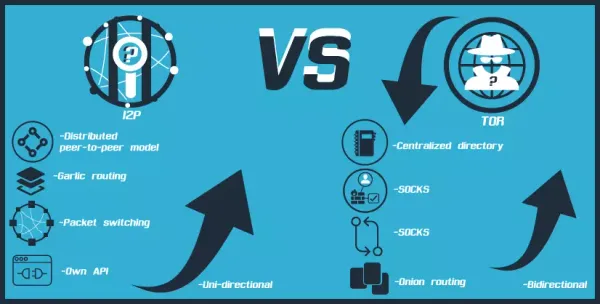Monero Subaddress Scanning: View Key Performance Optimization
Monero subaddress scanning optimization achieves 10-20x performance improvements through batch processing, parallel algorithms, and database indexing for high-volume wallet synchronization.

Monero subaddress scanning optimization addresses critical performance bottlenecks that emerge when wallets process millions of transactions to detect ownership through view key cryptographic operations. Monero subaddress specification demonstrates how subaddress derivation enables unlimited address generation for privacy enhancement, but creates computational challenges when scanning large transaction volumes where each output requires elliptic curve operations to determine ownership, making optimization essential for exchange operations and merchant payment processing systems handling thousands of transactions daily.

Subaddress Cryptographic Foundation and Derivation Mechanics
Subaddress generation utilizes hierarchical key derivation where master spending and view keys generate unlimited unique payment addresses through deterministic scalar multiplication operations on edwards25519 elliptic curve points. Elliptic curve cryptography provides the mathematical foundation showing how each subaddress derives from base address components combined with subaddress indices, creating cryptographically independent payment destinations that prevent address linkability while enabling efficient wallet scanning through shared view key material.
7f9a2b8c...
edwards25519
New Address
✓ Hash table lookup: O(1) constant time
✓ No address reuse patterns revealed
✓ Maintains transaction privacy
Your TX
Your TX
One-time stealth address construction combines sender ephemeral keys with recipient subaddress public keys to create unique output destinations that appear unrelated to external observers while remaining detectable by wallet holders possessing appropriate view keys. The cryptographic relationship between subaddresses and stealth addresses enables systematic scanning where wallets use constant-time hash table lookups to identify ownership without compromising privacy properties.
Privacy preservation through address diversification enables users to generate unique addresses for each transaction or counterparty, preventing address reuse that could compromise transaction unlinkability. However, this privacy benefit creates scanning complexity where wallets must efficiently process transaction outputs using optimized cryptographic operations that balance privacy benefits against computational overhead and synchronization performance.
Key derivation algorithms utilize Keccak-256 hash-to-scalar operations and elliptic curve scalar arithmetic that generate subaddress key material deterministically from master keys and index values. The derivation formula m = Hs("SubAddr" || a || account_index || subaddress_index_within_account) where Hs represents Keccak-256 hashing creates unique subaddress scalars that enable privacy-preserving payment detection.
View Key Scanning Algorithms and Computational Optimization
View key scanning implementation contains the core scanning logic showing how wallets process blockchain transactions to identify outputs belonging to user subaddresses through cryptographic key derivation and point multiplication operations. Each transaction output requires computing shared secrets and deriving potential stealth addresses using constant-time hash table lookups rather than iterative comparison against all known subaddresses.
View tags optimization significantly improves scanning performance by attaching a 1-byte identifier derived from the sender-receiver shared secret to each transaction output. When scanning, wallets first check the view tag for a match (occurring in approximately 1/256 outputs) before performing expensive elliptic curve operations, resulting in 40-70% scanning time reductions for modern wallet implementations.
Parallel processing patterns demonstrate strategies that distribute scanning workloads across multiple CPU cores to accelerate wallet synchronization operations. Thread-safe implementations enable concurrent processing of different blockchain segments while maintaining data consistency and avoiding race conditions during synchronization operations.
Memory management optimization addresses efficient access to large transaction datasets while minimizing RAM usage and maximizing cache efficiency during scanning operations. Techniques include streaming transaction processing, intelligent caching of frequently accessed data, and memory-mapped file access that enable processing of large blockchain datasets without performance degradation.
Large Transaction Volume Handling and Database Optimization
Database indexing strategies enable efficient transaction lookup and ownership tracking through carefully designed schema that optimizes common query patterns including transaction output searches, subaddress mapping, and balance calculations. Proper indexing reduces query times significantly even with extensive transaction histories.
Large Transaction Volume Handling & Database Optimization
1. Database Indexing
Indexing strategies allow wallets and daemons to query transactions quickly, even with millions of entries.
- Transaction output lookup
- Subaddress-to-transaction mapping
- Balance calculation queries
Indexes act as shortcuts for faster queries.
2. Incremental Scanning
Instead of rescanning the blockchain from scratch, wallets use checkpoints to resume from the last known block.
Wallet resumes from checkpoint instead of restarting full scan.
3. Storage Optimization
Blockchain grows continuously. Monero uses LMDB (memory-mapped database) to store transactions efficiently.
- Compression reduces disk footprint
- Selective storage balances speed vs. space
- LMDB offers efficient retrieval & validation
LMDB ensures scalable, efficient storage for all transaction history.
Incremental scanning minimizes redundant computation by maintaining checkpoint markers that enable wallets to resume scanning from previously processed blockchain positions rather than rescanning entire transaction histories. Checkpoint management requires atomic updates, corruption recovery mechanisms, and validation procedures that ensure scanning integrity while enabling efficient resumption after interruptions.
Storage optimization addresses maintaining complete transaction histories while minimizing disk space requirements through compression and selective storage strategies. The Monero daemon utilizes LMDB (memory-mapped database) for blockchain storage, providing efficient access patterns for transaction data retrieval and validation operations.
Network Optimization and Remote Node Integration
Remote node protocols enable lightweight wallet operation by delegating blockchain storage to external nodes while maintaining varying levels of privacy protection. Standard remote node connections preserve view key privacy by performing scanning locally, though they expose IP addresses and connection metadata to node operators.
Light wallet implementations share private view keys with remote servers for server-side scanning, significantly reducing device resource requirements but compromising privacy by allowing servers to monitor incoming transactions. This trade-off provides faster synchronization at the cost of revealing transaction reception patterns to service providers.
Bandwidth optimization techniques reduce network overhead during wallet synchronization through efficient data transfer protocols and caching strategies. Network communication can utilize TLS encryption and Tor routing to enhance privacy protection during remote node interactions.
Error handling and recovery mechanisms ensure robust wallet operation during network disruptions through comprehensive validation, rollback capabilities, and automatic recovery procedures that maintain reliable wallet functionality in production environments.
Performance Benchmarking and Implementation Best Practices
Modern optimization techniques focus on view tag implementation, efficient elliptic curve operations, and memory access pattern improvements that provide measurable performance benefits while maintaining cryptographic security properties. View tags represent the most significant documented performance improvement, reducing wallet scanning times by 40-70% through selective cryptographic verification.
Performance Benchmarking & Best Practices
1. View Tags
View tags reduce wallet scanning times by 40–70% by enabling selective cryptographic verification of transactions.
2. Hardware-Specific Optimization
Modern processors accelerate elliptic curve operations using:
- Cryptographic instruction sets (AES-NI, SHA extensions)
- SIMD/vector processing (AVX2, AVX-512)
- Multi-core parallelism for cryptographic workloads
3. Cache Efficiency
Performance is improved by optimizing memory access patterns:
- Better data locality for CPU cache usage
- Reduced memory bandwidth strain
- Optimized data structures for blockchain scanning
4. Scalability
As blockchain and transaction volumes grow, wallets must maintain performance:
- View tags ensure selective scanning
- Constant-time subaddress scanning maintains privacy and speed
- Scalable infrastructure supports adoption without slowdown
Scalability ensures Monero can handle future growth while keeping user experience seamless.
Hardware-specific optimization leverages processor capabilities including cryptographic acceleration and vector processing to enable faster elliptic curve operations. Modern hardware features provide performance benefits for cryptographic workloads when properly utilized through optimized implementations.
Cache efficiency optimization addresses memory access patterns and data locality considerations that impact performance on modern processor architectures. Optimized data structures and access patterns improve performance through better utilization of CPU caches and reduced memory bandwidth requirements.
Scalability considerations for wallet implementations must address growing blockchain sizes and increasing transaction volumes while maintaining acceptable performance characteristics. The implementation of view tags and constant-time subaddress scanning algorithms represents critical infrastructure for supporting network growth without degrading user experience as Monero adoption increases.




